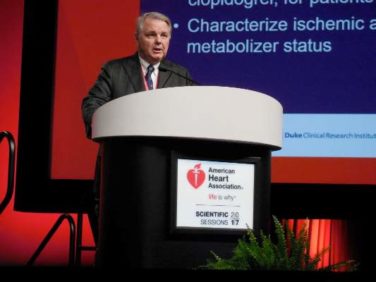FROM ANNALS OF INTERNAL MEDICINE
Substituting a less-expensive hepatitis C core antigen test into the standard two-step process for diagnosing active hepatitis C virus(HCV) infection could streamline and cut the cost of HCV detection.
The standard two-step approach – detection of HCV antibodies followed by nucleic acid testing (NAT) as a marker for HCV viremia – may be improved by replacing NAT with the HCV core antigen (HCVcAg) test, according to the results of a study published in Annals of Internal Medicine.
Dr. J. Morgan Freiman, of the Boston Medical Center, and her colleagues conducted a systematic literature review to identify 44 case-control, cross-sectional, cohort, or randomized trials that compared any of five HCVcAg screening tests with a NAT reference standard.
The investigators performed a meta-analysis to assess the sensitivity (proportion of samples with a positive NAT and HCVcAg) and specificity (proportion of samples with a negative NAT and HCVcAg) associated with the five HCVcAg tests, as well as how they correlated with NAT-derived HCV RNA levels greater than 3,000 IU/mL.
The two best-performing HCVcAg tests of the five assessed were the Abbott ARCHITECT HCV Ag and the Ortho HCV Ag ELISA, based on their sensitivity (93.4%and 93.2%, respectively), specificity (98.8% and 99.2%, respectively), and positive (80.6 and 116.5, respectively) and negative (0.06 and 0.06, respectively) likelihood ratios.
Although limited data were available, the results of three quantitative studies showed that Abbott ARCHITECT HCVcAg was well correlated with HCV RNA levels greater than 3,000 IU/mL.
“This systematic review concludes that a well-performing HCVcAg test can achieve similar diagnostic accuracy to NAT for identification of active HCV infection when the viral load exceeds 3,000 IU/mL,” Dr. Freiman and her colleagues noted.
HCVcAg testing should be researched further as a potentially viable and less-expensive alternative to NAT, the investigators said, with the goal of simplifying detection at the point of care and increasing the rate of patient diagnosis ( Ann Intern Med. 2016 Jun 21; doi: 10.7326/M16-0065 ).
The National Institutes of Health funded the study. Dr. White disclosed grant support from the funding source. Dr. Ongarello and Dr. Denkinger reported relationships with the Foundation for Innovative New Diagnostics. No additional authors reported conflicts of interest.





